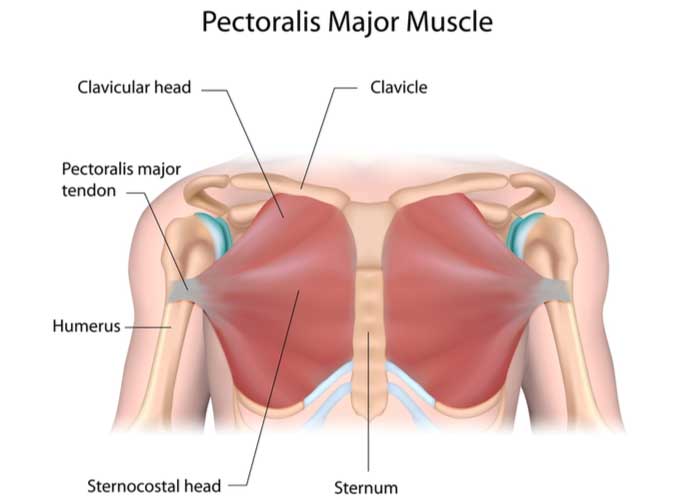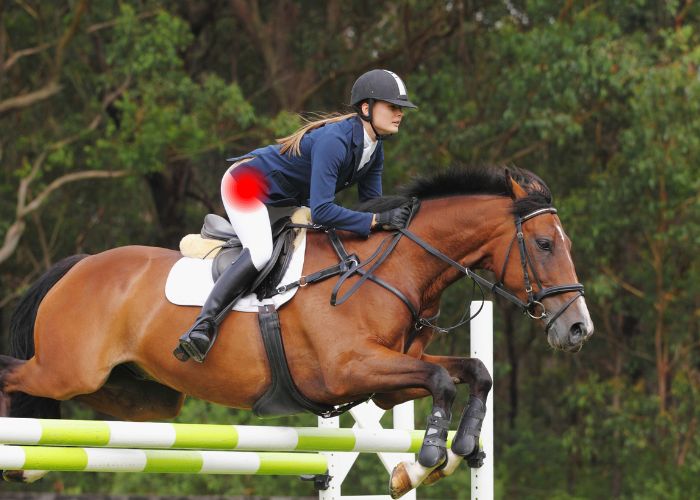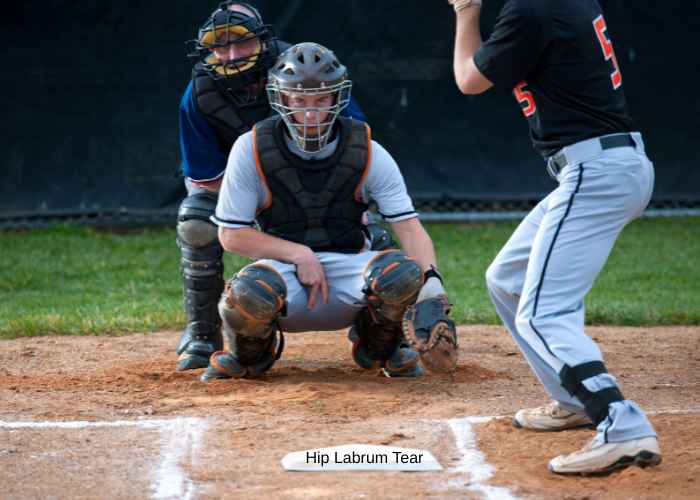What is an injury to the pectoralis major tendon?
There are two large fan-shaped muscles, the pectoralis major and pectoralis minor, that line the chest wall. These muscles are responsible for providing strength and stability to the shoulder with lifting heavy objects, so they are particularly important in athletes, laborers, and other active individuals. The larger of the two “pecs”, the pectoralis major, arises from the center of the sternum (chest) and clavicle (collarbone) and is anchored to the humerus (upper arm bone) by the pectoralis major tendon. The pectoralis major tendon often sustains damage when the force applied to the pectoralis major muscle surpasses the strength of the pectoralis major’s tendon attachment to the bone. This mechanism of injury indicates that athletes, particularly weightlifters, and labor-intensive workers have the highest likelihood of experiencing a pectoralis major tendon injury. A complete tendon tear involves both the sternal head and the clavicular head of the pectoralis major tendon while a partial tendon tear only involves the sternal head of the pectoralis major tendon.

What is the treatment for a pectoralis major tendon injury?
Although surgical intervention is often the most successful method for correcting a pectoralis major tendon injury, patients with mild tendon injuries may benefit from initial treatment with non-surgical therapies. These treatment measures include ice application and non-steroidal anti-inflammatory medications (NSAIDs) as well as avoiding activities that exacerbate the pain or initially caused the injury. Surgical intervention becomes necessary when non-surgical therapy has failed, or a complex or severe injury is sustained. The surgical repair of a pectoralis major tendon injury aims to restore stability and strength to the shoulder by reattaching the tendon back to the correct anatomical position. When a pectoralis major tendon injury is suspected, prompt medical attention is strongly encouraged to prevent tendon retraction and scarring. Dr. Ronak Mukesh Patel, orthopedic shoulder doctor, treats patients in Sugar Land, Pearland, and the Houston, Texas area who have experienced a pectoralis major tendon injury and are in need of surgical repair.
How is a pectoralis major tendon repair performed?
A pectoralis major tendon repair is typically performed with a small incision at the site of the pectoralis tendon insertion to obtain a robust repair. Once anesthesia has been administered and the patient is stabilized, Dr. Patel makes an incision at the injury site. Once the injury has been identified, the pectoralis major tendon is securely fastened with specialized sutures and reattached in the original anatomical position with special fixation devices within the bone.
On occasion, a prolonged period of time may pass between the pectoralis major tendon injury and surgical intervention. In these instances, the tendon may have retracted due to the amount of scarring. To correct for this tendon retraction, a tendon graft is often necessary to correctly reattach the tendon to the correct anatomical site. This tendon graft is harvested, either from the patient (autograft) or a donor (allograft) and sewn into the native pectoralis major muscle prior to reattachment.
What is the recovery period like after a pectoralis major tendon repair?
The recovery period following a pectoralis major tendon repair can vary depending on patient goals. Typically, the majority of patients can expect a return to full activities without restrictions in approximately 6 months depending on their pre-injury fitness level. Patients in the Sugar Land, Pearland, and Houston, Texas area can anticipate the following during the recovery period:
- Shoulder joint immobilization immediately after surgery. The sling or other immobilization device will remain in place for approximately 4 to 6 weeks.
- Post-operative pain and inflammation can be controlled with a combination of rest, ice, and non-steroidal anti-inflammatory medications (NSAIDs). If necessary, Dr. Patel can prescribe stronger pain medication to be taken as directed.
- Passive and active shoulder exercises are performed under the careful guidance of the physical therapy team. The key to a successful recovery is active participation and completion of the physical rehabilitation program to re-establish shoulder strength, mobility, and range of motion.
Pectoralis Major Repair Surgeon

Are you a weightlifter, or is your job highly labor-intensive? If so, you are at risk of tearing or rupturing the fan-like muscle/tendon attachment in the chest called the pectoralis major – or “pecs.” Pectoralis major tendon tears can be partial or complete and often require surgical intervention. Pectoral major tendon repair surgeon, Doctor Ronak Mukesh Patel, provides diagnosis as well as surgical and nonsurgical treatment options for patients in Houston, Sugar Land, and Pearland, TX who have suffered a pectoralis major tendon tear. Contact Dr. Patel’s team today!








